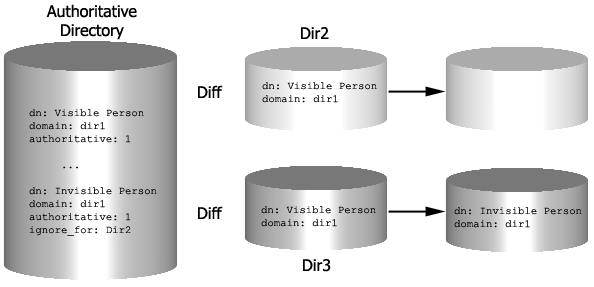| Previous | Contents | Index |
The if...then...else... statements in the recipe language are akin to those of the C programming language.
Braces can be used to group statements.
A loop construct is available, with the syntax:
loop {
...
exitif (expression);
...
}
|
exitif
statements.
Assignment statements are akin to those of the C programming language.
The #
character indicates that the rest of a line is a comment.
Template statements require a more detailed discussion, provided in Section 37.8.4.1.
37.8.4.1 Template Statements
A template...endtemplate statement is a multiline statement,
essentially providing a "picture" of the directory output.
Template statements consist of one directory attribute assignment per
line. The format is:
template
output-attribute-name-1: value-1
output-attribute-name-2: value-2
. .
. .
. .
endtemplate;
|
value-1, value-2,
etc., will consist of some combination or function of the
input directory attributes.
To simply insert the value of a directory attribute, enclose the directory attribute name in single quotes:
output-attribute-name: 'input-attribute-name' |
In a cook recipe, the purpose is to describe how to construct "canonical" attributes from the input "foreign" or "raw" attributes. So the template statement for a cook recipe will consist of assigning values obtained from "raw" attributes to "canonical" attributes. That is, the left hand side of each template line, the output-attribute-name-n
portion, will be the name of a "canonical" attribute, and the right hand side of each template name, the value-n
portion, will be a "raw" directory attribute or some function
of such "raw" attributes.
In a serve recipe, the purpose is to describe how to convert "canonical" attributes back into a foreign directory's native "raw" attributes. So the template statement for a serve recipe will consist of assigning values obtained from "canonical" attributes to "raw" attributes. That is, the left hand side of each template line, the output-attribute-name-n
portion, will be the name of a "raw" attribute, and the right hand side of each template name, the value-n
portion, will be a "canonical" attribute or some function of
such "canonical" attributes.
Note that there is a special purpose attribute which can be placed in an entry via a template, the ignore_for
attribute. This attribute takes a directory name as its value; the entire entry in which the attribute appears will be ignored (omitted) when performing differencing with the specified directory. Multiple ignore_for
attributes can be specified in an entry, in which case the entry will
be ignored when differencing with any of the specified directories.
Figure 37-4 shows an example of an entry for "Invisible
Person" which is to be ignored when performing differencing with
directory "Dir2".
Figure 37-4 Ignoring an Entry

| Previous | Next | Contents | Index |